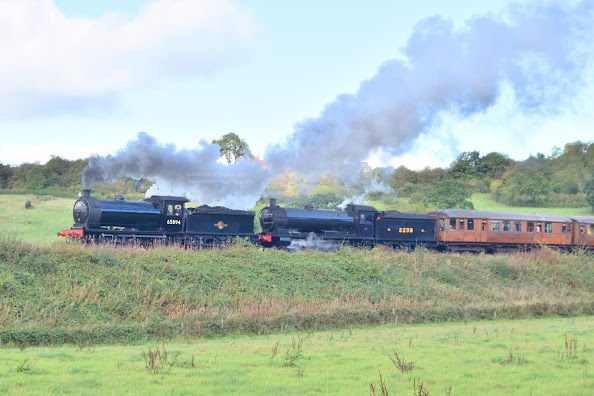Event recap: Beamish Museum - "Coffee Pot 150" 01/05/21
Event recap: Beamish Museum - "Coffee Pot 150" 01/05/21
Beamish museum held their first event since 2019 on the 1st of May 2021. The event was to celebrate the 150th birthday of the museums resident "Coffee Pot" No.1. Which, was built in 1871 by Head Wrightson & Co Ltd in Teesside for Dorking Greystone Lime Company for use at Betchworth Quarry. It is believed that the engine was in use up till 1949, although some reports suggest that it was dismantled for inspection in 1950 and returned to steam, steaming till 1952 when it was withdrawn. In 1960, it was repurchased by its makers and along with 2 other "Coffee Pots" both from Seaham. These were No's.21 and 33, which is also a Beamish resident. No.21 is now on static display at Preston Park near Thornaby.
No.1 was offered to Beamish Museum in 1962 but did not arrive at the museum till 1970. Between 1962 and 1970 it was stored at British steels Consett Ironworks. At Beamish it was restored to operational condition in it's Betchworth condition, complete with a roof. It was later restored to it's 1940s condition. The age of the locomotive and some of its curious design features lead to it being sidelined during in the 1990s. Restoration to operational condition did not start again till 2006, and it returned to steam in 2010.
The museum aren't running trains at their Rowley station site this year so Peckett 1370 "May", which normally operates these trains has been moved across to the colliery railway. The event was the first chance to see the locomotive in steam there. It was built in 1915 and is an R2 class 0-4-0ST. It worked at Yates Duxbury & Sons papermill at Heap Bridge in Bury, Lancashire along with 2 other locomotives. Peckett "Annie" now preserved at the Buckinghamshire Railway Centre and an Andrew Barclay 0-4-0ST also named "Annie".
This engine was built in 1877 as No.683 for the Londonderry Railway who operated Seaham Harbour where the loco spent it's entire working life. It was later transferred to Seaham Harbour Dock Company in 1899 who renumbered it No.18.
It operated at Seaham well into the 1960s by which time it was owned by the national coal board. "No.18" was stored at Seaham for several years before arrived at Beamish during the 1970s. It was restored to steam by Laings in Hartlepool who rebuilt it as close as possible to its original appearance as an open cab well tank, it first steamed in this condition in 1977. It only ran for a few years before it was condemned.
There were some failed attempts during the 90s to restore the engine and some limited work was done. But, it wouldn't be till 2010 that a serious restoration to its saddle tank condition was started.
The Chaldron waggons often seen in use at Beamish also come from the Seaham area.
Lead ore was mined at Cornish Hush from around 1863 to 1902. The mine was reopened in 1971 to 1980, but Fluorspar was mined instead. The museum's replica was completed in 2016. Two similar Stephen Lewin locomotives named "Ant" & "Bee" were constructed for use on Great Laxey Mine Railway. These were scraped in 1935 but, replicas have been made for the reopened railway.
When the railway closed in 1937 many of the locomotives including Grey were sold on to Penrhyn Quarry railway in North Wales. Here the engine was renamed "Glyder". When the PQR closed, the engine and several others were sold into private collections in the USA. Grey/Glyder returned to the UK in 2012 along with Avonside 0-4-0T "Durham/Ogwen". All the engines that were exported have now returned to the UK. In recent years Grey/Glyder has returned to steam at Beamish and still carries a lot of its original Penrhyn Quarry railway livery.
Video
If you’ve enjoyed this, then please consider supporting this page so that I can continue to deliver new content like this. Patreon and Ko-Fi












Comments
Post a Comment